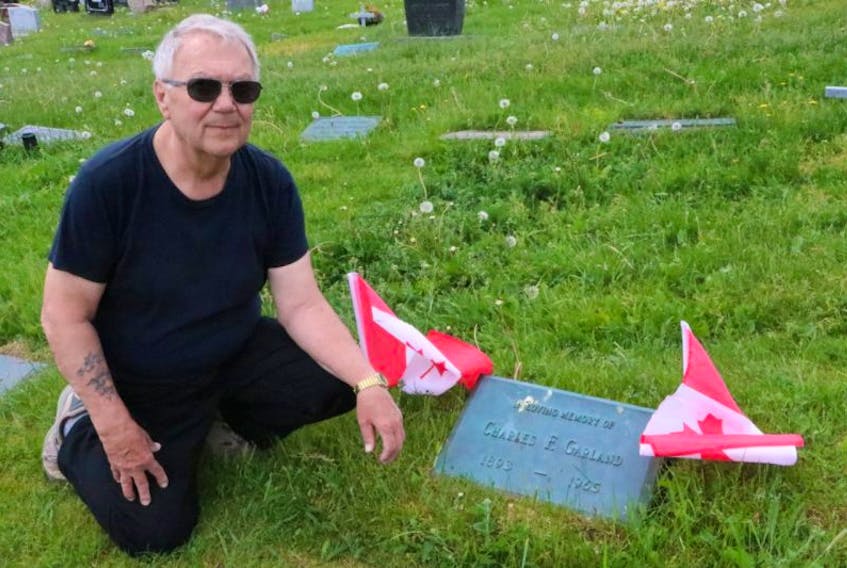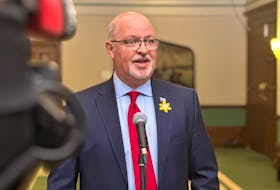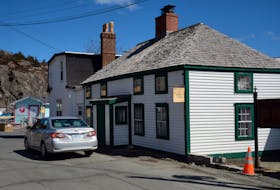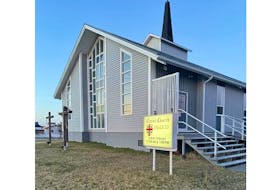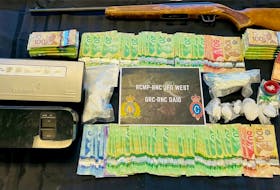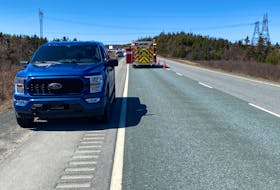In the Field of Honour, the headstones stand tall in neat rows in tribute to the people who lie there, and each headstone identifies the military unit and conflict the person was a part of.
At the head of Garland’s grave sits a flat, grey stone bearing only his name and year of his birth and death. The ground over the grave has sunken a little and the grass is not trimmed well.
Walking by, you’d never know he is also one who deserves the same respect and honour as those in the Field of Honour.
Charles Garland was a member of the Royal Newfoundland Regiment, a Blue Puttee, one of the First 500— Reg. No. 182.
He served with the regiment in Gallipoli, Egypt and France — and was wounded during the July 1, 1916 battle at Beaumont Hamel where the Newfoundland Regiment was nearly wiped out in a brave and unfaltering push toward the heavily fortified and armed German line.
Garland rose through the ranks and became a commissioned officer before the end of the war. After the war, he served as secretary of the Great War Veterans Association, later to become known as the Royal Canadian Legion.
Garland died March 5, 1965 after a civilian career as a businessman. He had also been involved in the fight alongside Joey Smallwood to take Newfoundland and Labrador into Confederation with Canada.
Garland’s nephew, Gordon Garland, began some years ago trying to get Veterans Affairs Canada to erect a proper headstone on his uncle’s grave, complete with the emblem of the Royal Newfoundland Regiment.
He also sent a request to the Last Post Fund, an organization that operates in co-operation with Veterans Affairs Canada to ensure (according to the Last Post Fund website) “all eligible war veterans can receive a dignified funeral, burial and headstone.”
To date, Gordon Garland has not had success.
A letter he received from the Last Post Fund told him that it could not place a headstone on his uncle’s grave, as there was already a private marker there.
On the website it states: On June 11, 1996, the Last Post Fund amended its Letters Patent to create the Unmarked Grave Program whose objective is to provide a permanent military-style marker for eligible veterans who lie in unmarked graves. The program is available to eligible veterans whose grave has not had a permanent headstone or foot marker for five years or more, and who have not previously received funeral and burial funding from the Last Post Fund or Veterans Affairs Canada (as a marker may be provided under another program).”
Gordon Garland said that because the family placed the flat headstone on the grave in 1965 following the burial, his uncle — a First World War soldier who was wounded in battle — does not qualify for an official military headstone.
“If they become aware of graves of First World War soldiers who do not have a marker identifying their service, and the rule in place prevents them from placing a proper marker on the grave, then why don’t they change the rules?” Garland asked.
“These people went through so much over there. You just look at the video footage, or photos, and see what they went through, and read about what they went through, and you can only imagine. They deserve to be recognized like all the others. I can’t believe such a rule stands in the way.”
Gordon said he is also concerned there are other veterans’ graves that are being forgotten.
This July 1 marks 101 years since the Battle of Beaumont Hamel. On that fateful day — according to the Royal Newfoundland Regiment website — out of the 801 Newfoundlanders in the regiment at that time, “the best statistics available indicate that 721 men went over the top and of those 619 became casualties. (233 killed, 386 wounded). The battalion’s war diary on July 7 states that only 68 men were available for roll call the next day.”
The website notes that the roll call didn’t include the 10 per cent of the regiment that had been left out of the battle as reserve. Every officer of the Newfoundland battalion who went into battle that day became a casualty. Fourteen officers were killed and 12 were wounded. The Newfoundlanders suffered the highest unit casualty rate that day.
Battle of Beaumont Hamel casualty figures:
Total strength on June 30: 801
Left out of battle on July 1(10 per cent): 80
Committed to battle: 721
Killed in action or died of wounds: 14 officers, 219 other ranks
Wounded: 12 officers, 374 other ranks
Total KIA and wounded: 619
Percentage casualty rate: 619/721 or 85 per cent
Missing on July 1 were 91 reported, many are thought to have filtered in from No Man’s Land over the next 48 hours.
Source: Royal Newfoundland Regiment website

